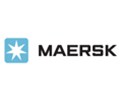 When a piece of unprecedented malicious software rampages through thousands of critical networks around the world, it tends to get our full attention. And this week’s digital plague, known as Petya (or NotPetya or Nyetya) proved especially vicious. It paralyzed thousands of computers, including those of Ukrainian government agencies, transportation infrastructure, and companies, as well as international targets including Danish shipping firm Maersk and US pharmaceutical giant Merck. It avoided the mistakes made by the hackers behind the last global ransomware outbreak known as WannaCry, skipping the sort of “kill-switch” that neutered that earlier ransomware crisis. And some researchers are starting to believe it may have been just another offensive in Ukraine’s long-running cyberwar with Russia, though this time with collateral damage felt around the world.
When a piece of unprecedented malicious software rampages through thousands of critical networks around the world, it tends to get our full attention. And this week’s digital plague, known as Petya (or NotPetya or Nyetya) proved especially vicious. It paralyzed thousands of computers, including those of Ukrainian government agencies, transportation infrastructure, and companies, as well as international targets including Danish shipping firm Maersk and US pharmaceutical giant Merck. It avoided the mistakes made by the hackers behind the last global ransomware outbreak known as WannaCry, skipping the sort of “kill-switch” that neutered that earlier ransomware crisis. And some researchers are starting to believe it may have been just another offensive in Ukraine’s long-running cyberwar with Russia, though this time with collateral damage felt around the world.
But Petya wasn’t the only news in the hacker world this week. A group of researchers revealed that it’s disturbingly easy to hack entire wind farms. WikiLeaks continued its trickle of leaks from the CIA’s vault of hacking tools, revealing how the agency uses target computers’ Wi-Fi to geolocate them. The repeated leaks of that sort of top-secret information from agencies like the CIA and NSA has made it clearer that the US government can’t be trusted to protect any secret backdoor to encrypted systems. And former WIRED editor Kevin Poulsen built a tool to circumvent President Trump’s habit of blocking his critics on Twitter.
How Maersk Dealt With Petya Paralysis
As Petya took hold of thousands of the world’s computers, the $265 billion dollar Danish shipping behemoth Maersk was one of the most high-profile victims. And the shipping news outlet Splash got the inside story of how the company was forced to adapt to being locked out of its computer networks around the world. From Mobile, Alabama, to India, the firm switched to manual tracking of its loading and unloading of cargo. In New Zealand and Australia, for instance, Splash reports that Maersk staff used handwritten records and (apparently offline) Excel spreadsheets to catalogue shipments. Meanwhile, at least some of Maersk’s facilities, like the Port Elizabeth, New Jersey operations of its sister company APM, were shut down altogether until it could recover from the ransomware ordeal.
Source: Wired
